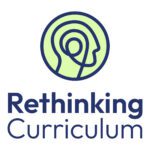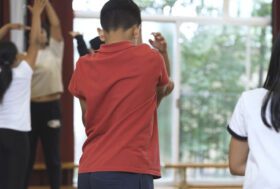School 360: Play as learning, instead of play or learning


This article has been published as part of the Rethinking Curriculum project, kindly funded by The Helen Hamlyn Trust.
Sarah Seleznyov, Associate Headteacher, School 360
Introduction
In September 2021, School 360, a brand-new primary in the Big Education Trust, opened its doors in Newham, London to its first cohort of Reception-age pupils, just as the COVID lockdown was ending. The school opened in a brand-new area, not yet fully built. Families who had raised their children during the COVID years felt isolated and lacked a support network. Children had not benefited from the social friendships and nursery education that should have been in place, due to the lockdowns.
The name of the school intended to capture our commitment to social justice and to the ‘head, heart, hand’ model of education: children would receive a 360-degree rounded education, and the school would be both inward- and outward-facing, working within, with and on behalf of the local community.
One of the first curriculum principles that we agreed was a focus on play. We knew that in the Early Years play is crucial to learning. Many high-performing Scandinavian and Asian countries, for example, focus on play-based approaches to learning for longer, and formalise education much later than in England. In Wales, play-based learning until the age of seven was introduced in 2011, and studies found that both attainment and wellbeing improved (Taylor et al., 2015).
Over the last few decades, we have seen a disappearance of play from schools, and we believe that this has contributed to several of the core challenges currently facing schools and families. These include:
- The attendance crisis and teacher recruitment and retention issues: Teachers and pupils are increasingly not wanting to be at school because learning is boring, decontextualised and purposeless, and abstract and theoretical
- InclusionAn approach where a school aims to ensure that all children are educated together, with support for those who require it to access the full curriculum and contribute to and participate in all aspects of school life concerns: There are increases in exclusions, along with stress and anxiety for families with children with special educational needs and disabilities (SEND)
- A reduction in creative thinking: Children become more dependent on teacher feedback, less curious and creative, less willing to take risks and less willing to learn beyond what is required for the test.
In England, play is often seen to be entirely child-directed and therefore a bit of a hit-and-miss approach to learning (Smith, 2015). This narrow view of play fails to capture the rich and varied possibilities for learning through play and playful learning – physical play, playing with objects, role-play, symbolic play and playing with rules (Whitebread et al., 2012). Guided play offers a teacher-led version of play that merges the best of the ‘telling’ and ‘discovery’ approaches to learning: the child has some free choice within a playful activity so that they can make their own discoveries, and the adult provides guidance based on the individual child’s interests, needs and understanding, to support them towards a predetermined learning goal (Skene, 2022). We wanted our curriculum to incorporate all these different types of play.
Curriculum and pedagogical approach
We introduced a model of a play-based learning or a continuous provision approach, which included play opportunities and independent play both inside and outside the classroom, no matter the weather. We call this ‘COOL time’ (Choose Our Own Learning) and it takes place for the majority of the day. Teachers create challenge and progression within an environment of choice and independence, using ‘must do’ tasks in COOL time. These are linked to the project content for the half-term. Each classroom has areas that reflect the choices that we offer children in their play: creative, construction, science, role-play, writing, maths and outside area. Playful approaches to teaching maths and literacy are also embedded within our curriculum, including Let’s Think).
A progression of resources, skills and knowledge is carefully mapped out for the Reception COOL time areas and the Key Stage 1 curriculum subjects, which support teachers to plan high-quality provision. Every Monday, the children will tour the classroom with their teacher and learning coach while adults model how to use the different areas, and we deploy half our adults inside and half outside.
There are regular ‘must do’ tasks for children, which begin in Reception as adult-guided tasks and are then managed independently during play-based sessions in a time and place of children’s choice. They upload all their work themselves onto an online platform called Seesaw, instead of using books. This has reduced a focus on ‘written evidence’, reduced teacher workload, involved parents more in children’s learning and enabled easy tracking of progress. We embrace risk as an essential part of play and support children to independently assess and plan for risk.
We use the Cambridge University PEDAL (Play in Education, Development and Learning) unit’s TRAIL (Teaching Professionals Reflecting on Agency in Learning) materials (Baker et al., 2023) to enhance our interactions with the children during their play. We reflect on our interactions with children in staff meetings.
We also believe in the value of free play and have thought about lunchtimes as an opportunity to experience effective free play as a learning experience. Inspired by the OPAL project we use teachers as facilitators and participants, not just observers, and give children access to exciting and open-ended resources that promote creativity and innovation and provide opportunities for risk-taking.
Next year will be our first experiment in Key Stage 2. We have been looking at ‘playful learning’ as a concept and considering the Mantle of the Expert (Heathcote and Herbert, 1985) as an approach.
We have had to help staff new to the school to unlearn and relearn their practice, and have therefore developed a unique professional development model as detailed. All teaching staff (including teaching assistants) at School 360 come to a weekly professional development session after school. In these sessions, we agree a focus, usually based on something that we have read or identified through our formal and informal observations of practice. We then make a plan to film ourselves teaching during the following week. At the next professional development session, we watch the videos in pairs or small groups and give each other constructive feedback. We then agree as a group what our learning has been and what our next steps should be as individuals, as teams and as a whole school. The feedback may lead to a follow-up session, where staff refilm themselves with the same focus or are revisited at some point in the future.
We have found this to be a very powerful approach, which also enables us to evaluate the children’s learning experiences and the quality of teaching and learning. The gap between the teaching offered by teachers and support staff is much narrower, since support staff benefit from the same high-quality professional development.
Findings and implications
Our results are strong, and our parent and staff satisfaction is very high. The quality of work that pupils produce is high and we are able to monitor this via the Seesaw app. Visitors to the school comment on how happy, engaged and independent the learners are, including those with SEND, and this was also reflected in our OfstedThe Office for Standards in Education, Children’s Services and Skills – a non-ministerial department responsible for inspecting and regulating services that care for children and young people, and services providing education and skills report) .
While schools around us are struggling to recruit pupils and closing classes, we are popular among parents, many of whom do not want a formal sit-down approach for their young children. We have many applications for every post at the school and teachers say that they are excited by the focus on play and have negative experiences of teaching in other schools.
Recommendations
- Connect with other schools using a play-based approach: Surviving our first Ofsted was challenging, since our approach did not easily align with the Ofsted framework. We had to produce a lot of paperwork to map our approach against the preferred knowledge-rich curriculum model and ‘prove’ that we were teaching subject content, and other schools who had travelled this same journey were very helpful in this process.
- Resources: We were lucky enough to be a new school so could start resourcing for the approach from scratch, but when supporting existing schools to do the same, we know that there are cost implications in terms of furniture and resources. The good news is that you need less furniture but you do need different kinds of furniture and resources. Visit a school doing this already to get some ideas of what to buy, collect and get rid of.
- Premises: We were lucky not to need to make major changes to our building in order to accommodate the approach – for example, all our EYFS and Key Stage 1 classes have access to outdoor space. We know that for schools we have supported this has not always been the case, and they have had to think more creatively about this challenge – for example, swapping classes, fencing off part of the playground or doing building work to create access.
- Staffing: Our staff costs are higher, since we need an additional adult to supervise the indoor/outdoor free flow of play. This is becoming more and more challenging as budgets have shrunk, but is a crucial budget priority for us. High-quality interactions are key to making play-based learning effective.
References
Baker ST, Le Courtois S and Eberhart J (2023) Making space for children’s agency with playful learning. International Journal of Early Years Education 31(2): 372–384.
Heathcote D and Herbert P (1985) A drama of learning: Mantle of the expert. Theory into Practice 24(3): 173–180.
Skene K (2022) J: Juggling play and learning: The role of guided play. PEDAL. Available at: www.pedalhub.net/play-pieces/post/j-juggling-play-and-learning-the-role-of-guided-play (accessed 28 December 2022).
Smith S (2015) Playing to engage: Fostering engagement for children and teachers in low socioeconomic regions through science and mathematics play-based learning. PhD Dissertation, University of Notre Dame, Australia.
Taylor C, Davies R, Rhys M et al. (2015) Evaluating the Foundation Phase: The outcomes of Foundation Phase pupils up to 2011/12 (report 2). Available at: www.gov.wales/sites/default/files/statistics-and-research/2019-07/150107-outcomes-foundation-phase-pupils-2011-12-report-2-en.pdf (accessed 16 September 2024).
Whitebread D, Basilio M, Kuvalja M et al. (2012) The importance of play: A report on the value of children’s play with a series of policy recommendations. University of Cambridge and Toy Industries of Europe. Available at: www.csap.cam.ac.uk/media/uploads/files/1/david-whitebread—importance-of-play-report.pdf (accessed 16 September 2024).









